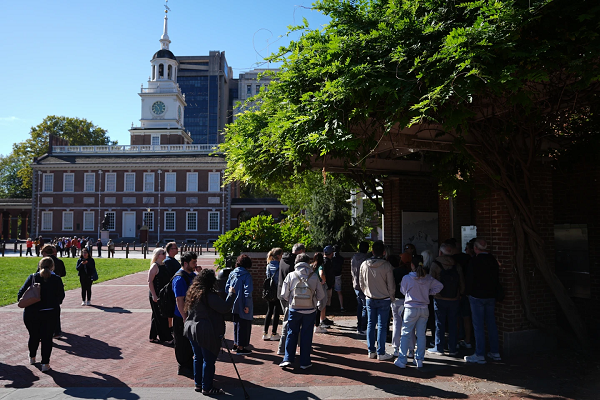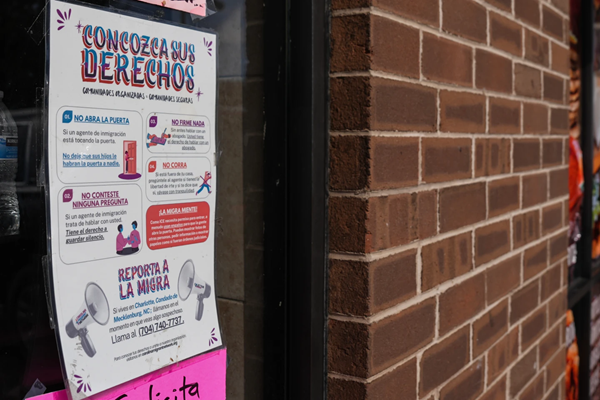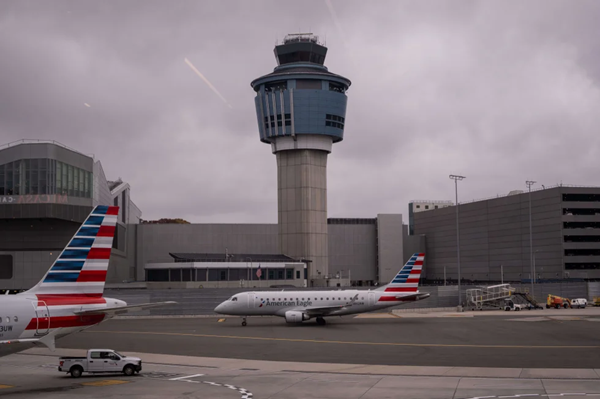National parks will remain ‘generally’ open during the shutdown, but Liberty Bell doors are closed

NEW YORK (AP) — Crowds of people loaded onto boats to tour the Statue of Liberty and Ellis Island Wednesday morning with no immediate signs of the government shutdown that is triggering the furlough of about two-thirds of National Park Service employees.
But in Philadelphia, the nation’s birthplace, tourists enjoying a crisp fall morning on Independence Mall were thwarted in their hopes of visiting the Liberty Bell. They were being turned away at the entrance and could only steal glances of it inside a glass pavilion.
A shutdown contingency plan released by the park service late Tuesday said “park roads, lookouts, trails, and open-air memorials will generally remain accessible to visitors.” However, given sharply reduced staffing, parks without “accessible areas” will be closed during the shutdown. And sites currently open could close if damage is done to park resources or garbage is building up, the plan says.
Yet with limited information offered on government websites, questions were popping up across park service social media sites on Wednesday, with people asking if camping permits would still be good at places like Chaco Culture National Historical Park in northwestern New Mexico and if the gates would be open at Rocky Mountain National Park in Colorado.
The furlough of almost 9,300 park employees means parks that stay open can provide only limited services such as protection of life, property and public safety, the plan says.
In Mississippi, the state’s most-visited cultural attraction, Vicksburg National Military Park, was shut down. A nonprofit group was trying to work out an agreement to re-open it using donated money to pay for staff. At Acadia National Park in Maine, there were no park rangers in sight and would-be hikers in search of trail maps found empty receptacles outside a closed visitor center.
The plan did not detail which of the park service’s more than 400 sites are considered inaccessible. The Associated Press requested further details in emails and a telephone call to officials with the National Park Service and Department of Interior on Tuesday and Wednesday.
The park service oversees large national parks such as Yellowstone and Grand Canyon, national battlefields, national monuments such as the Statue of Liberty and historic sites including Independence National Historical Park, home of the Liberty Bell. Those attractions often serve as economic engines for nearby communities.
Many national parks stayed open during a five-week shutdown in Trump’s first term. Limited staffing led to vandalism, overflowing garbage, damage to natural resources and illegal off-roading.
A group of 40 former National Park Service superintendents had urged the Trump administration to close the parks during a shutdown to prevent a repeat of the damage that occurred in 2018 and 2019. They warned a shutdown now could be even worse with parks already under strain from a 24% staff cut and severe budget reductions.
During a 2013 shutdown, the park service under former President Barack Obama turned away millions of visitors to its more than 400 parks, national monuments, and other sites. The service estimated that the shutdown led to more than $500 million in lost visitor spending nationwide. That also caused economic damage to gateway communities that border national parks and are heavily dependent on the visitors they draw.
The contingency plan allows parks to enter into agreements with states, tribes or local governments willing to make donations to keep national park sites open.
States where national parks draw major tourism lobbied to keep them open during past shutdowns, and Utah agreed to donate $1.7 million in 2013 to keep its national parks open. Arizona, Colorado, New York, South Dakota and Tennessee have also donated money to keep parks staffed during previous shutdowns.
Colorado’s governor suggested the state could do that again this time for Rocky Mountain National Park. But a spokesperson for the governor of Arizona said last week that it cannot afford to pay to keep open its national parks that include the Grand Canyon.


